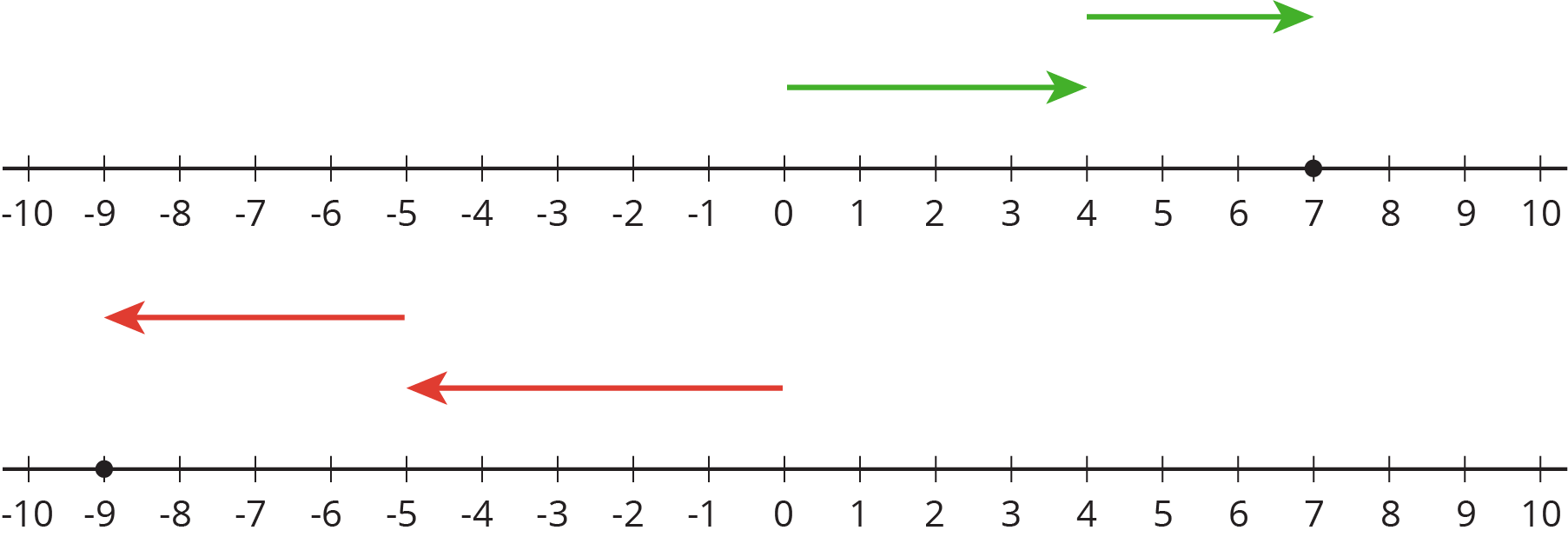The opposite of a number is the same distance from 0 but on the other side of 0.
The opposite of -9 is 9. When we add opposites, we always get 0. This diagram shows that $9 + \text-9 = 0$.
When we add two numbers with the same sign, the arrows that represent them point in the same direction. When we put the arrows tip to tail, we see the sum has the same sign.
To find the sum, we add the magnitudes and give it the correct sign. For example, $(\text-5) + (\text-4) =\text - (5 + 4)$.
On the other hand, when we add two numbers with different signs, we subtract their magnitudes (because the arrows point in the opposite direction) and give it the sign of the number with the larger magnitude. For example, $(\text-5) + 12 = +(12 - 5)$.





